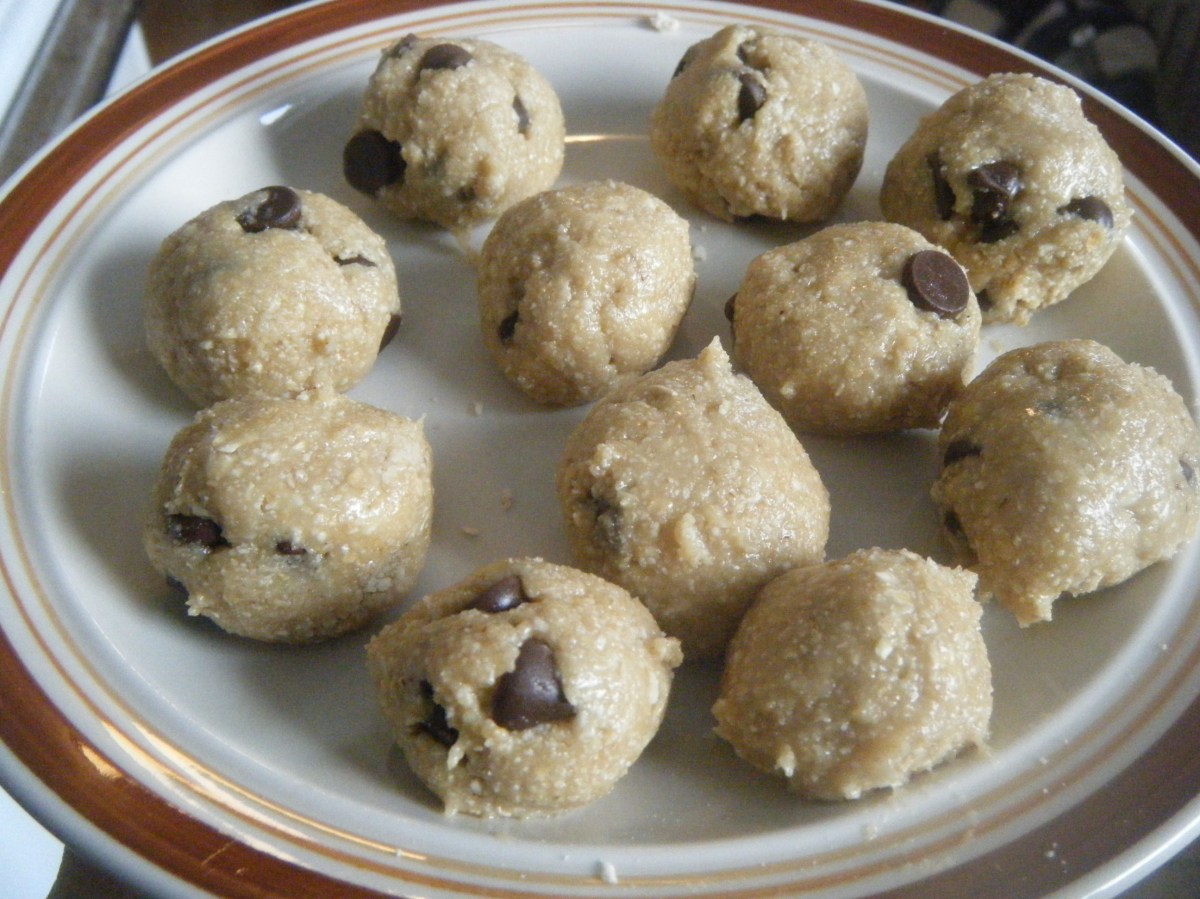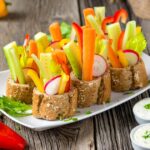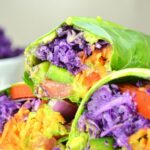Imagine sinking your teeth into rich, velvety chocolate mousse, the creamy texture melting on your tongue – a decadent experience you wouldn’t expect from a completely raw, vegan dessert. This isn’t a dream; it’s the delicious reality of a world where healthy indulgence reigns supreme. Prepare to explore a collection of recipes that redefine dessert, showcasing vibrant flavor combinations and surprisingly nutritious ingredients. Discover how simple techniques can transform humble nuts, seeds, and fruits into breathtakingly beautiful and unbelievably delicious treats, all while nourishing your body from the inside out.
This guide unveils the secrets to crafting decadent raw vegan desserts, from mastering fundamental techniques like blending and dehydrating to perfecting the art of visually stunning presentation. We’ll delve into the surprising nutritional benefits, comparing these healthy delights to their traditional counterparts and highlighting the positive impact on digestion and energy levels. Through detailed recipes, step-by-step instructions, and adaptable variations, you’ll learn to create these masterpieces for any dietary need or preference, ensuring everyone can savor the joy of healthy, guilt-free indulgence.
Exploring the Health Benefits of Raw Vegan Desserts
Indulging in dessert doesn’t have to mean sacrificing your health. Raw vegan desserts offer a delightful alternative, brimming with nutritional benefits often absent in their traditional counterparts. By utilizing unprocessed, plant-based ingredients, these creations provide a unique blend of vitamins, minerals, and antioxidants while minimizing refined sugars and unhealthy fats. This section will delve into the specific advantages of choosing raw vegan desserts over conventional options.
Raw vegan desserts boast a nutritional profile significantly different from traditional desserts. The absence of refined sugars, often found in abundance in cakes, pies, and cookies, is a key differentiator. Instead, sweetness is derived from naturally occurring sugars in fruits like dates, mangoes, and bananas, providing a gentler, more sustained energy release. Furthermore, raw vegan desserts are typically lower in unhealthy saturated and trans fats, commonly found in butter, cream, and processed oils used in baking. They are, however, often richer in healthy fats from sources like avocados, nuts, and seeds, contributing to satiety and nutrient absorption.
Nutritional Advantages of Raw Vegan Ingredients
Raw vegan ingredients retain their full enzymatic activity, unlike processed ingredients which undergo heat treatment that destroys beneficial enzymes. These enzymes play a vital role in digestion, breaking down food more efficiently and improving nutrient absorption. The high fiber content present in many raw vegan desserts, such as those made with nuts, seeds, and fruits, further supports healthy digestion by promoting regular bowel movements and preventing constipation. Moreover, raw ingredients are typically packed with vitamins, minerals, and antioxidants, offering a potent boost to the immune system and overall well-being. For instance, a raw chocolate avocado mousse is rich in healthy fats from avocados and antioxidants from cacao, offering a far superior nutritional profile compared to a traditional chocolate mousse laden with sugar and cream.
Comparison with Traditional Desserts: Sugar, Fat, and Fiber
Consider a classic chocolate chip cookie versus a raw vegan date-based cookie. The traditional cookie is likely loaded with refined sugar, contributing to blood sugar spikes and crashes. It will also contain significant amounts of saturated fat from butter. In contrast, the raw vegan cookie relies on dates for sweetness, offering a lower glycemic index and a slower, more sustained energy release. It will incorporate healthy fats from nuts and seeds, and possess a considerably higher fiber content, promoting digestive health. This difference in macronutrient profiles highlights the significant nutritional advantage of choosing raw vegan options. A visual comparison would show the stark contrast: a vibrant, colorful raw dessert versus a pale, potentially overly processed counterpart. The raw dessert would likely be denser and less airy, indicative of its higher fiber content.
Potential Health Benefits: Improved Digestion and Increased Energy
The high fiber content and abundance of enzymes in raw vegan desserts contribute significantly to improved digestion. This, in turn, can lead to increased energy levels, as the body efficiently absorbs nutrients without the digestive strain often associated with refined sugars and processed foods. The absence of refined sugars also helps to stabilize blood sugar levels, preventing the energy crashes often experienced after consuming traditional desserts. Furthermore, the rich concentration of antioxidants in many raw vegan desserts helps to combat oxidative stress, reducing inflammation and supporting overall health and vitality. Imagine the sustained energy boost you experience after enjoying a vibrant raw mango and coconut dessert compared to the subsequent lethargy after indulging in a heavy, sugar-laden cake. The difference is a testament to the power of raw vegan ingredients.
Mastering Raw Vegan Dessert Techniques
Creating decadent raw vegan desserts that are both delicious and healthy requires mastering a few key techniques. These techniques involve careful ingredient selection, precise methods, and an understanding of how different ingredients interact to create the desired textures and flavors. From creamy mousses to crunchy crumbles, the possibilities are endless once you grasp these fundamental skills.
Raw vegan desserts rely heavily on blending, dehydrating, and the strategic use of specific ingredients. Blending is crucial for creating smooth, creamy textures, often used to make bases for cheesecakes or mousses. Dehydration is essential for creating crispy components like crackers or dehydrated fruit leathers. Nuts and seeds provide healthy fats and structure, while dates contribute sweetness and binding properties. Other ingredients like coconut oil, cocoa powder, and various fruits and spices add depth and complexity to the final product. Understanding the role of each ingredient is key to successful raw vegan dessert making.
Blending Techniques for Creamy Textures
Blending is the foundation of many raw vegan desserts, creating the smooth, creamy textures found in cheesecakes, puddings, and ice creams. High-speed blenders are ideal for achieving a completely smooth consistency, breaking down ingredients like nuts and seeds into a creamy paste. For example, a cashew-based cheesecake filling requires careful blending to create a velvety texture. Adding liquid gradually while blending helps prevent the mixture from becoming too thick or seizing up. The ideal consistency will depend on the recipe, but generally, a completely smooth and lump-free texture is desired for most creamy applications. Over-blending can sometimes result in a slightly oily texture, so it’s crucial to monitor the consistency closely.
Dehydrating for Crispy and Chewy Textures
Dehydration is a key technique for achieving a range of textures, from crispy to chewy. Dehydrators are specifically designed for this purpose, allowing for even drying at low temperatures to preserve nutrients and avoid cooking the ingredients. This process is vital for creating raw vegan crackers, fruit leathers, and even some cake layers. The drying time will vary depending on the thickness and type of ingredient, but careful monitoring is crucial to prevent over-drying or under-drying. Over-drying can lead to brittle textures, while under-drying can result in a gummy or sticky consistency. For example, dehydrated fruit slices can be used as a crunchy topping, while thinly dehydrated coconut flakes add a delightful chewiness to raw vegan bars.
A Step-by-Step Guide: Layered Raw Chocolate Avocado Mousse
This recipe demonstrates layering techniques and visual appeal.
- Base Layer: Blend 1 cup pitted dates, ½ cup raw almonds, and 2 tablespoons cacao powder until a smooth paste forms. Press this mixture into the bottom of a small glass dessert dish.
- Mousse Layer: Blend 1 ripe avocado, ¼ cup cocoa powder, 2 tablespoons maple syrup, 2 tablespoons almond milk, and a pinch of salt until completely smooth and creamy.
- Topping Layer: Chop 2 tablespoons of raw cacao nibs and sprinkle them over the mousse layer. Optionally, add a few fresh raspberries or blueberries for a pop of color and texture.
- Chill and Serve: Refrigerate the dessert for at least 30 minutes to allow the layers to set before serving. The contrast in textures and colors between the crumbly base, creamy mousse, and crunchy topping creates a visually stunning and delicious dessert.
Texture Comparison: Creamy, Crunchy, and Chewy
Achieving different textures in raw vegan desserts requires careful ingredient selection and processing methods.
| Texture | Ingredients | Methods | Examples |
|---|---|---|---|
| Creamy | Cashews, avocados, coconut cream, silken tofu | High-speed blending, careful addition of liquids | Cheesecakes, puddings, mousses |
| Crunchy | Nuts, seeds, dehydrated fruits, coconut flakes | Dehydration, toasting, coarse grinding | Crackers, crusts, toppings |
| Chewy | Dates, figs, coconut, nut butters | Blending, pressing, minimal dehydration | Bars, brownies, fruit leathers |
Visual Appeal and Presentation of Raw Vegan Desserts

Raw vegan desserts, despite their healthy ingredients, can be incredibly visually appealing. Mastering presentation techniques elevates these creations from simple treats to edible works of art, enhancing the overall dining experience and leaving a lasting impression. The right plating and garnishes can transform a simple raw chocolate avocado mousse into a decadent masterpiece.
The visual appeal of raw vegan desserts hinges on a thoughtful interplay of color, texture, and form. Plating styles can range from minimalist elegance to vibrant maximalism, depending on the dessert and the desired effect. Garnishes act as the final flourish, adding pops of color, contrasting textures, and intriguing flavor hints. Careful consideration of these elements is key to creating truly stunning presentations.
Plating Techniques and Garnishes for Raw Vegan Desserts
Effective plating techniques involve understanding negative space, color harmony, and height. A simple, clean plate allows the dessert to be the star, while strategic placement of elements creates visual interest. For instance, a vibrant raw mango sorbet might be served in a small, shallow bowl, its bright yellow offset by a few fresh mint leaves and a drizzle of dark agave nectar. Conversely, a layered raw chocolate cake could be presented on a larger plate, with strategically placed raspberries and a dusting of cacao nibs to add texture and visual complexity.
Garnishes should complement, not compete with, the dessert. Consider using fresh berries for pops of color and juicy texture, edible flowers for delicate beauty, chopped nuts for a textural contrast, or finely grated chocolate for richness. Even a simple dusting of powdered sugar or cacao powder can elevate the presentation. The key is to choose garnishes that enhance the overall aesthetic and flavor profile of the dessert.
Visual Guide: Designing and Decorating Three Raw Vegan Desserts
This section provides detailed descriptions of the visual design and decoration for three distinct raw vegan desserts, showcasing different color palettes and textural approaches.
Raw Mango and Coconut Chia Seed Pudding
Imagine a vibrant yellow chia seed pudding, thick and creamy, layered in a clear glass. The bottom layer is a pale yellow, almost white, made with coconut milk and a touch of lime. The middle layer is a richer, deeper yellow from the addition of pureed mango. The top layer is a swirl of the same mango puree, creating a visually appealing marbled effect. A few toasted coconut flakes are sprinkled on top, offering a textural contrast against the smooth pudding. A single sprig of fresh mint adds a touch of green, providing a visual break and a refreshing aroma. The overall color palette is sunny and cheerful, reflecting the tropical flavors.
Raw Chocolate Avocado Mousse with Raspberry Coulis
This dessert showcases a dramatic contrast of colors and textures. A deep, dark chocolate mousse, rich and decadent, is piped into a small bowl. The deep brown of the mousse is dramatically offset by a vibrant red raspberry coulis, artfully swirled around the base of the mousse. A few fresh raspberries are scattered on top, providing a playful scattering of red against the dark chocolate. A dusting of unsweetened cocoa powder adds depth and visual interest, enhancing the overall richness of the dessert. The color palette is rich and sophisticated, with the deep brown and vibrant red creating a striking contrast.
Raw Strawberry and Pistachio Cheesecake
This dessert combines delicate pastel colors with contrasting textures. A base of crushed pistachios creates a light green layer, visible through the translucent cheesecake. The cheesecake itself is a pale pink, created from blended strawberries and cashews, its smooth surface offering a stark contrast to the crunchy pistachio base. Fresh strawberries, sliced thinly, are arranged artfully on top, their bright red adding a pop of color against the pastel pink. A few whole pistachios are scattered around the strawberries, providing a textural element and a touch of green. The color palette is soft and inviting, with the pastel pinks and greens creating a delicate and elegant presentation.
Unleash your inner pastry chef and embark on a culinary adventure that redefines healthy eating. The journey through these decadent raw vegan desserts is not merely about creating delicious treats; it’s about embracing a lifestyle that prioritizes both flavor and well-being. From the vibrant colors and textures to the surprising health benefits, each bite is a testament to the power of mindful indulgence. So, gather your ingredients, unleash your creativity, and prepare to be amazed by the transformative power of raw, vegan desserts – a symphony of flavor and health that will leave you utterly convinced.
FAQ Insights
Are raw vegan desserts difficult to make?
Many raw vegan desserts are surprisingly simple to make, requiring basic kitchen equipment and readily available ingredients. While some techniques like dehydrating may require a bit of practice, the majority of recipes are straightforward and beginner-friendly.
How long do raw vegan desserts last?
Storage is crucial for raw vegan desserts. Most should be refrigerated and consumed within 3-5 days. Properly stored, they retain their flavor and texture, but it’s always best to enjoy them fresh for optimal taste and quality.
Can I freeze raw vegan desserts?
Freezing some raw vegan desserts is possible, though it might affect their texture slightly upon thawing. It’s best to check individual recipes for freezing recommendations, as some ingredients may not freeze well.
Are all raw vegan desserts naturally sweet?
While many use naturally sweet ingredients like dates and fruit, the level of sweetness can vary greatly depending on the recipe. Some might require additional sweeteners like maple syrup or agave, while others rely on the inherent sweetness of the fruits and nuts used.


